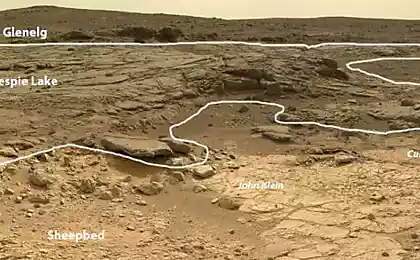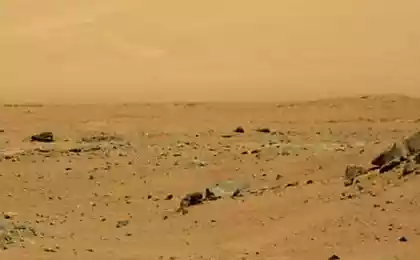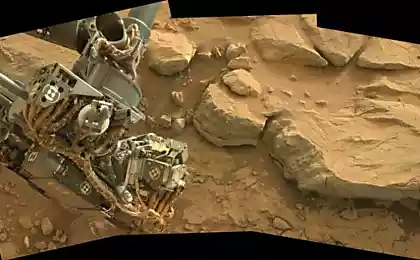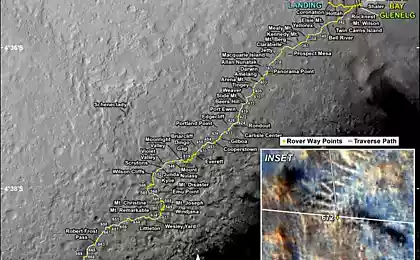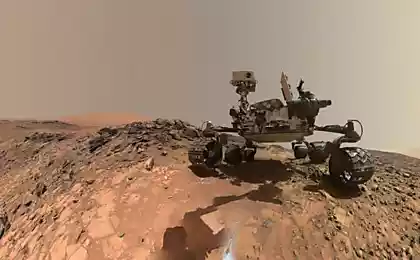564
Curiosity began the first stage of terraforming
In order to transform Mars into Earth-like planets, you first have to get rid of the Martian dust. The first stage of cleaning the surface of the successfully implemented rover MSL Curiosity.
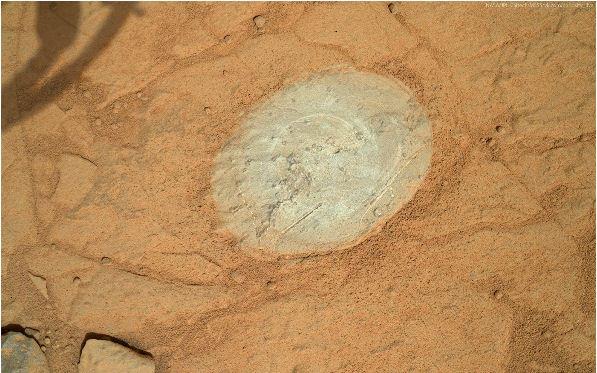
The main task, which is now performing Curiosity - a search for a convenient and safe area for drill testing.
Features of the device drill is that it is extremely contraindicated in any liquid. Although the Martian surface humidity tends to zero in the soil can contain minerals that will turn into mud under heat and pressure increase.

If the particles stick to the inner surfaces of the drill, it is a scientific instrument will be lost. Dirt, even if you do not block the channels will make the distortion in all the test results and their accuracy will be significantly reduced. Therefore, rover operators behave like engineers in a minefield - use all means of remote studies.
Preliminary analysis of soil Curiosity can be performed using a laser spectrometer and an X-ray spectrometer ChemCam alpha rays APXS.

APXS is located on the manipulator, so simultaneously with the sample studied by the camera MAHLI, which never ceases to amaze quality image detail.

In addition, it is the height map, so that everyone can practice the three-dimensional modeling of the Martian rocks. Such as the "Mars Flower".

For ChemCam Martian dust is easy. The laser vaporizes it just a few pulses, and further study is subject to the basic rock at depth.

APXS work harder. He was important in close contact with the sample. The device irradiates the surface of the alpha particles and it glows in X-rays. The emission spectrum of the spectrometer captures and lets you know the composition of the surface. Dust has a significant effect on his testimony. In order to get rid of it, the rover equipped with a wire brush.

Earlier APXS examined only areas that were so not too dusty, so 150 days Curiosity has successfully worked without using a brush in the case. But as soon as he used it, it was the time to exclaim "Mars is not red!»

Without any shamanism with photoshop Curiosity has shown that the color of the surface of Mars is more like a concrete floor than on a broken brick. Of course, we are talking about a particular rock in a specific area of the crater Gale. However, and at the landing site, where the rocket jets blew the dust, soil color was too gray.
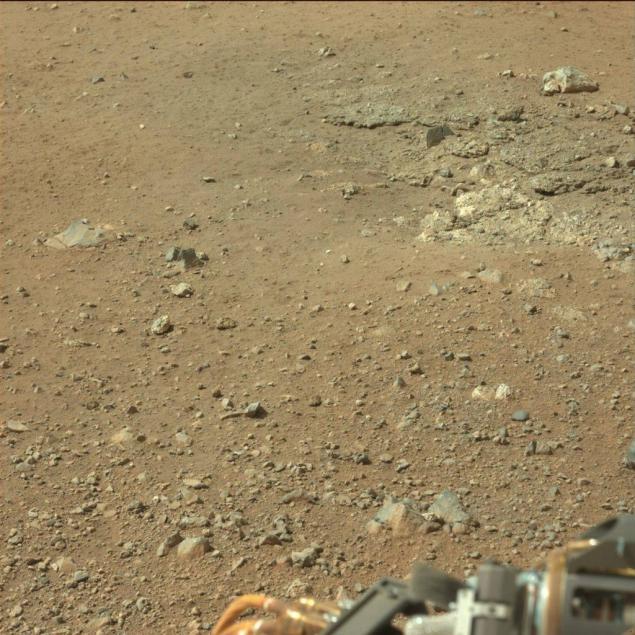
If this place called Ekwir_1, will be elected for drilling, the process will be long, and you can see how quickly this patch of dust will be delayed. But if the site is not amiss, the rover will leave quickly, and to assess the degree of dust will not turn. The bedrock on which now stands Curiosity, is interesting to explore. But there is high risk to stumble upon dilutes mineral. As this site likely has long been a body of water, in the soil can contain rocks bound water at a chemical level. And no one will determine how they will be stable during drilling operations.
That is the bottom of the lake, there are fewer doubts. In the distance, perfectly readable Waterfront:

A purified range can be seen frozen bubbles caused billions / millions / thousands of years ago in the liquid mud lake.
© Zelenyikot

Source:

The main task, which is now performing Curiosity - a search for a convenient and safe area for drill testing.
Features of the device drill is that it is extremely contraindicated in any liquid. Although the Martian surface humidity tends to zero in the soil can contain minerals that will turn into mud under heat and pressure increase.

If the particles stick to the inner surfaces of the drill, it is a scientific instrument will be lost. Dirt, even if you do not block the channels will make the distortion in all the test results and their accuracy will be significantly reduced. Therefore, rover operators behave like engineers in a minefield - use all means of remote studies.
Preliminary analysis of soil Curiosity can be performed using a laser spectrometer and an X-ray spectrometer ChemCam alpha rays APXS.

APXS is located on the manipulator, so simultaneously with the sample studied by the camera MAHLI, which never ceases to amaze quality image detail.

In addition, it is the height map, so that everyone can practice the three-dimensional modeling of the Martian rocks. Such as the "Mars Flower".

For ChemCam Martian dust is easy. The laser vaporizes it just a few pulses, and further study is subject to the basic rock at depth.

APXS work harder. He was important in close contact with the sample. The device irradiates the surface of the alpha particles and it glows in X-rays. The emission spectrum of the spectrometer captures and lets you know the composition of the surface. Dust has a significant effect on his testimony. In order to get rid of it, the rover equipped with a wire brush.

Earlier APXS examined only areas that were so not too dusty, so 150 days Curiosity has successfully worked without using a brush in the case. But as soon as he used it, it was the time to exclaim "Mars is not red!»

Without any shamanism with photoshop Curiosity has shown that the color of the surface of Mars is more like a concrete floor than on a broken brick. Of course, we are talking about a particular rock in a specific area of the crater Gale. However, and at the landing site, where the rocket jets blew the dust, soil color was too gray.

If this place called Ekwir_1, will be elected for drilling, the process will be long, and you can see how quickly this patch of dust will be delayed. But if the site is not amiss, the rover will leave quickly, and to assess the degree of dust will not turn. The bedrock on which now stands Curiosity, is interesting to explore. But there is high risk to stumble upon dilutes mineral. As this site likely has long been a body of water, in the soil can contain rocks bound water at a chemical level. And no one will determine how they will be stable during drilling operations.
That is the bottom of the lake, there are fewer doubts. In the distance, perfectly readable Waterfront:

A purified range can be seen frozen bubbles caused billions / millions / thousands of years ago in the liquid mud lake.
© Zelenyikot

Source:








